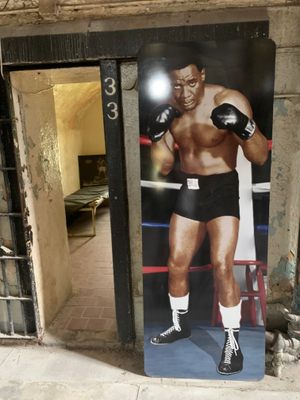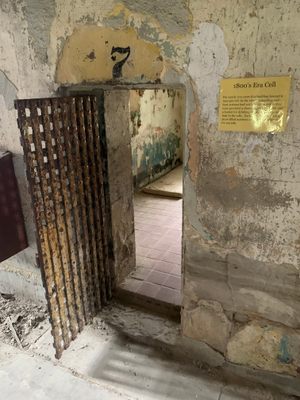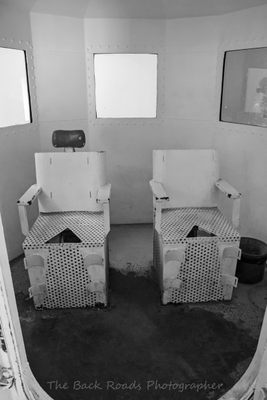About
In 1822 Jefferson City was designated the state capital of Missouri, then just a year old. The title was tenuous so governor John Miller did what anyone would do to to solidify the claim. He called for the construction of a maximum security prison there.
In 1836, the Missouri State Penitentiary accepted its first inmate, and in 1842 the first female inmate arrived.
The prison’s buildings and any nearby homes were built by inmates, and by 1885 six major shoe companies were taking advantage of the prisoners’ unpaid labor.
Activist Emma Goldman, who the U.S. considered the “ablest and most dangerous” anarchist in the country spent some time there starting in 1917. She organized the women inmates and led a rebellion against unfair treatment. Her agitations were so successful that in 1919, even though she testified but couldn’t pay what was left of the $10,000 fine she owed, prison administrators said she was free to go anyway.
In 1932, with 5,200 inmates, it held the largest inmate population in the U.S. and was considered one of the most successful prisons in the country. But countless injuries and deaths within the facility and a major riot in 1954 led Time Magazine to deem it “the bloodiest 47 acres in America.”
Some familiar names were also housed in the prison at different points. Charles “Sonny” Liston learned to box in the prison, and just a year after he was released on parole in 1952, his meteoric rise to fame began when he won the 1953 National Heavyweight Championship in Chicago.
James Earl Ray was sentenced to 20 years in the penitentiary in 1959, after holding up a grocery store, but in 1967 he managed to escape by hiding in a shipping box. Just a year later, on April 4, 1968, Ray killed Martin Luther King Jr.
Prior to 1937, executions were carried out by the local sheriff. After governor Lloyd Stark signed a bill in September of that year, inmates would have to be executed using lethal gas. Thirty-nine inmates were executed in the gas chamber in a small building separate from the main prison between 1937 and 1965.
The penitentiary was the oldest operating penal facility west of the Mississippi River up until it closed on September 15, 2004. Inmates were moved to the nearby Jefferson City Correctional Center.
The prison is now a museum and has been the site of over 100 organized paranormal investigations. In addition to hosting historical tours the museum features ghost tours and hunts, including an overnight stay.
Related Tags
Community Contributors
Added By
Published
August 22, 2017















































































